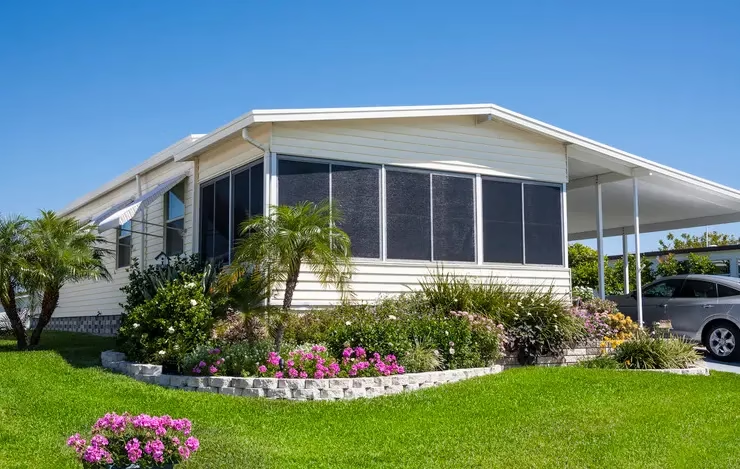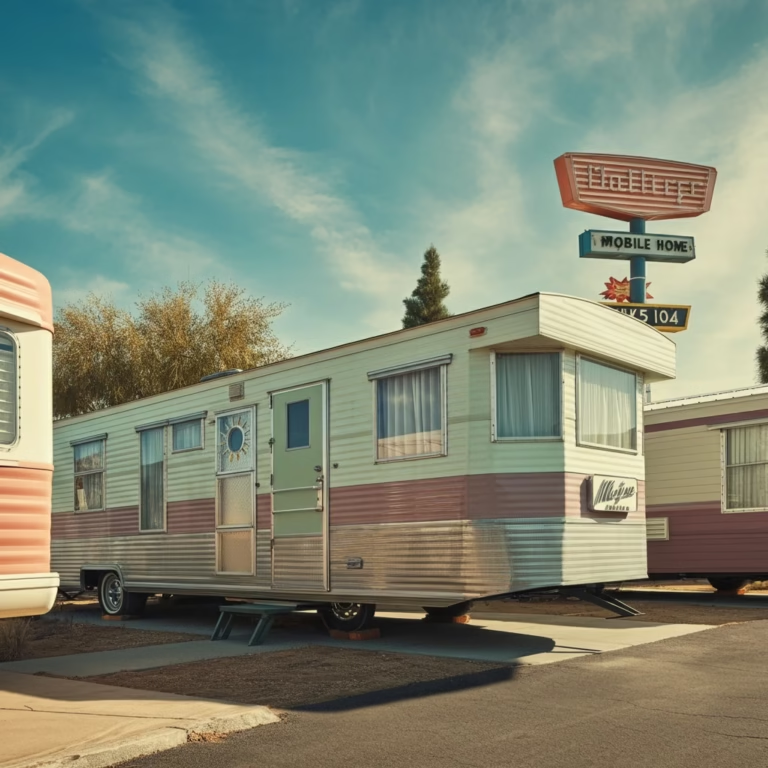How Much Wind Can an Older Mobile Home Withstand?
Safety is a crucial consideration for anyone living in or owning a mobile home. With weather patterns growing more unpredictable, knowing how much wind can an older mobile home withstand is vital for ensuring your safety and protecting your property during severe storms.
Mobile homes, especially older ones, are known to be more vulnerable to extreme weather conditions like high wind events, tornadoes, and hurricanes. Understanding the limits of these homes and how to reinforce them can make a significant difference when facing nature’s forces.
This article provides a detailed examination of how much wind can an older mobile home withstand, what factors influence its wind resistance, and what you can do to reinforce protection measures for maximum safety.
Understanding Wind Resistance in Older Mobile Homes
Purpose of the Keyword
The keyword how much wind can an older mobile home withstand indicates that many people are seeking clarity on:
- The safety measures associated with older mobile homes during extreme wind conditions.
- Whether older models meet modern safety standards.
- Improvement strategies to make mobile homes more resilient against high winds.
- Factors impacting a mobile home’s ability to endure strong winds, such as anchoring and structural design.
The audience searching for this keyword is primarily concerned with protecting life and property during severe weather, particularly in areas prone to storms, hurricanes, or tornadoes.
Target Audience
This topic appeals to several groups of people, including:
- Mobile home residents who live in areas with frequent windstorms and want to secure their property.
- New buyers making informed decisions about older mobile homes’ safety features.
- Homeowners upgrading older mobile homes to meet current safety standards.
- Emergency preparedness planners looking to provide resources and recommendations for mobile home communities.
Wind Strength and Older Mobile Homes
An older mobile home’s wind resistance depends on several factors, such as the year it was built, its condition, and enhancements made to its structure.
Construction Standards Matter
Mobile homes built before 1976 are more likely to be vulnerable to high winds. This was the year that the Department of Housing and Urban Development (HUD) introduced the Manufactured Home Construction and Safety Standards, commonly referred to as the HUD Code, which significantly improved construction and anchoring requirements.
- Pre-1976 Mobile Homes: These homes were not designed to withstand major wind events. Many lack proper anchoring systems or reinforced frames, leaving them susceptible to damage at wind speeds as low as 70 mph.
- Post-1976 Mobile Homes: Homes built after this year generally comply with wind-resistance standards, particularly in areas prone to hurricanes.
The HUD Code introduced three Wind Zones for manufactured homes, based on geographic risk:
- Wind Zone I – Withstands wind speeds up to 70 mph.
- Wind Zone II – Withstands wind speeds up to 100 mph.
- Wind Zone III – Withstands wind speeds up to 110-130 mph.
Most older mobile homes that do not meet HUD standards fall into Wind Zone I, making them less resilient against severe storms.
How Wind Impacts Older Mobile Homes
Several factors affect how much wind can an older mobile home withstand, including:
- Anchoring Systems: Older homes often have inadequate or outdated anchoring systems that fail against strong winds.
- Roof and Wall Design: Flat roofs and thin walls on older models provide minimal resistance to high-pressure winds.
- Structural Wear and Tear: Over time, materials degrade, weakening the home’s ability to hold together during storms.
Here is a general estimate of wind-related risks for older mobile homes based on wind speeds.
| Wind Speed (mph) | Impact on Older Mobile Homes |
|---|---|
| 50-70 mph | Minimal damage like loose shingles or exterior siding tearing off. |
| 70-90 mph | Moderate damage, including broken windows and roof damage. |
| 90-110 mph | Severe structural damage; the home may shift from its foundation. |
| 110+ mph | Total destruction or complete loss of the mobile home. |
Steps to Improve Wind Resistance in Older Mobile Homes
While older mobile homes may be vulnerable to high winds, there are several affordable steps you can take to enhance their resilience.
Upgrade the Anchoring System
Proper anchoring prevents a mobile home from being uplifted or displaced during a storm. Install modern anchoring systems like earth augers or steel straps to secure the home.
Reinforce the Roof
Older flat roofs are more susceptible to wind damage. Consider upgrading them to pitched roofs with wind-resistant materials like metal or reinforced shingles.
Strengthen the Walls and Windows
Add storm-resistant window coverings (e.g., hurricane shutters) and reinforce walls with additional metal siding or bracing. This provides extra protection for critical points of the home.
Keep Surroundings Clear
Remove debris, large tree branches, and unsecured outdoor items from around your mobile home. These can become projectiles during high winds.
Use Tie-Downs
Tie-down systems, which secure the mobile home directly to the ground, add an extra layer of stability. Double-check that the tie-downs are tight and comply with current safety standards.
Choosing a Safe Location
Identifying a safe location can mitigate some risks when severe weather strikes. If you live in an older mobile home, make sure it is situated:
- Away from flood-prone areas.
- On high ground to reduce the risk of water saturation weakening anchoring systems.
- With additional wind barriers, like tree lines (though avoid tall trees close to the structure).
Consider relocating your family or home if you consistently face high-risk situations during storm seasons.
Emergency Planning
No matter how much reinforcement is applied, older mobile homes cannot offer the same safety as modern homes during extreme windstorms. Always have an emergency preparedness plan, including:
- Evacuation Routes: Know where local storm shelters are located.
- Emergency Supplies: Stock up on water, food, flashlights, and first-aid kits.
- Early Warnings: Stay informed through weather alerts and act before the storm worsens.
Key Considerations in Determining the Risks
Determining how much wind can an older mobile home withstand involves balancing its inherent design limits with the improvements you make.
| Factor | Impact on Wind Resistance |
|---|---|
| Year Built | Pre-1976 homes are less resistant compared to newer models. |
| HUD Wind Zone Rating | The geographic rating dictates maximum wind tolerance. |
| Condition of the Home | Undamaged roofs, walls, and foundations improve performance in storms. |
| Reinforcements Added | Tie-downs, roofing upgrades, and window reinforcements enhance safety. |
Final Thoughts
The question of how much wind can an older mobile home withstand depends largely on its construction year, current condition, and reinforcement strategies. While pre-1976 homes are more vulnerable than newer models adhering to HUD guidelines, proactive upgrades can significantly improve their safety against high winds.
Remember, when severe storms or hurricanes are anticipated, personal safety should always take priority over property preservation. Evacuation is often the best course of action for older mobile home residents during extreme weather events.
By understanding your mobile home’s limitations and preparing accordingly, you can reduce risks and protect what matters most.






